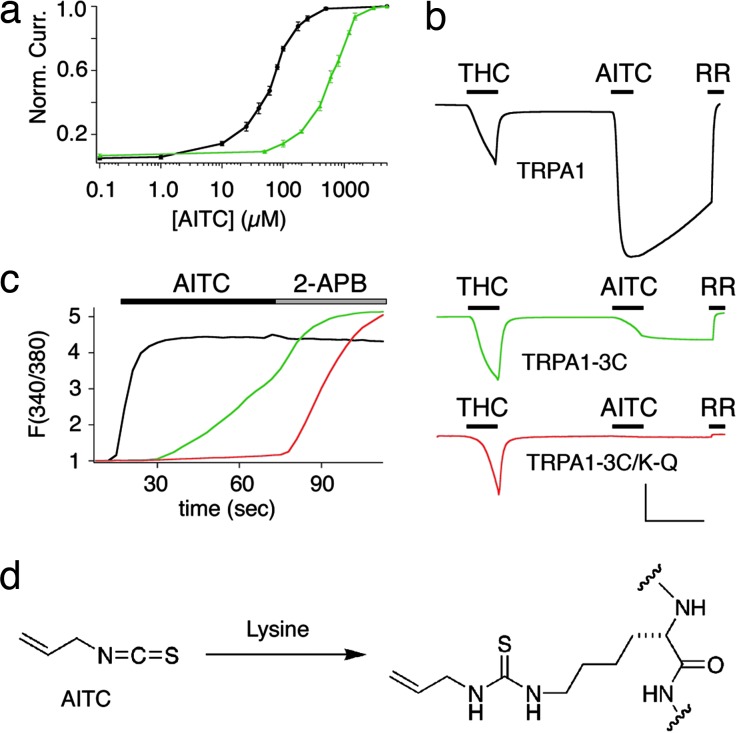Fig. 4.
Residual AITC response of triple mutant TPPA1-3C is mediated by irreversible modification of lysine-708. (a) AITC dose–response curves for TRPA1 and TRPA1-3C expressed in oocytes (n = 5 for each data point). Points were obtained by measuring response to 30-sec pulse of test dose at +80 mV and normalized to maximum response elicited by 5 mM AITC. EC50 values were obtained by using curves fit with the least-squares approximation method. (b) Representative traces (–80 mV) from oocytes expressing wild-type hTRPA1 (black trace), triple mutant hTRPA1-3C (green trace), and quadruple mutant TRPA1-3C–K708Q (red trace) (n = 5 each). Response to AITC (200 μM) is weaker and irreversible in triple mutant and completely ablated in quadruple mutant. Response to THC (400 μM) and blockade by ruthenium red (10 μM) are used as positive controls. (Scale bars: 200 nA and 1 min.) (c) Average traces of calcium response from transfected HEK293 cells (n = 250, two trials), as assessed by ratiometric Fura-2/AM imaging. Cells transfected with quadruple mutant hTRPA1-3C–K708R (red trace) are not sensitive to AITC (150 μM) but retain capacity to respond to 2-APB (200 μM), whereas cells transfected with triple mutant TRPA1-3C (green trace) or wild-type TRPA1 (black trace) respond to both drugs. Mean peak responses: AITC, 4.58 ± 0.04 (WT), 3.54 ± 0.01 (3C), 1.17 ± 0.04 (K708R); 2-APB, 4.43 ± 0.04 (WT), 5.19 ± 0.05 (3C), 5.30 ± 0.05 (K708R). (d) A chemical model for irreversible activation of TRPA1-3C involving the formation of a stable thiourea linkage between AITC and a lysine side chain.

